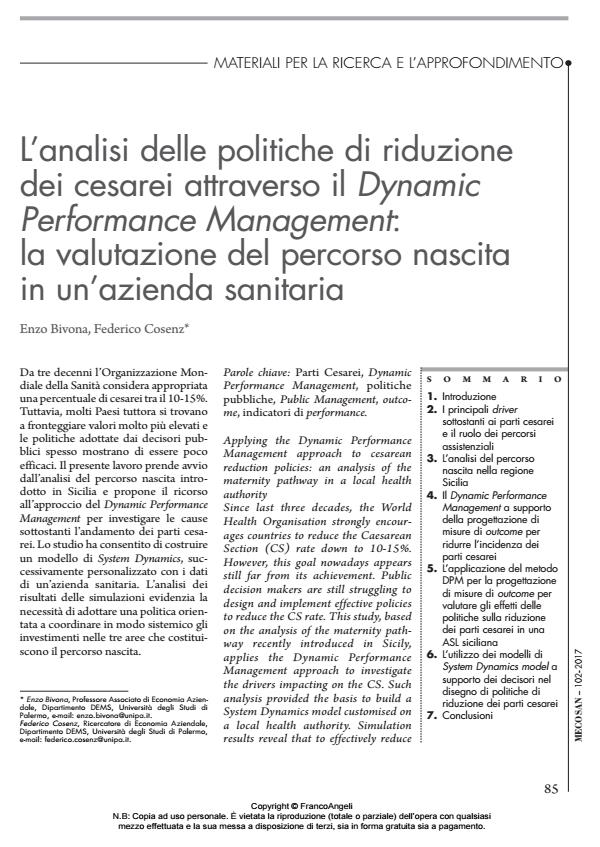L’analisi delle politiche di riduzione dei cesarei attraverso il Dynamic Performance Management: la valutazione del percorso nascita in un’azienda sanitaria
Journal title MECOSAN
Author/s Enzo Bivona, Federico Cosenz
Publishing Year 2018 Issue 2017/102
Language Italian Pages 20 P. 85-104 File size 23853 KB
DOI 10.3280/MESA2017-102005
DOI is like a bar code for intellectual property: to have more infomation
click here
Below, you can see the article first page
If you want to buy this article in PDF format, you can do it, following the instructions to buy download credits

FrancoAngeli is member of Publishers International Linking Association, Inc (PILA), a not-for-profit association which run the CrossRef service enabling links to and from online scholarly content.
Applying the Dynamic Performance Management approach to cesarean reduction policies: an analysis of the maternity pathway in a local health authority Since last three decades, the World Health Organisation strongly encourages countries to reduce the Caesarean Section (CS) rate down to 10-15%. However, this goal nowadays appears still far from its achievement. Public decision makers are still struggling to design and implement effective policies to reduce the CS rate. This study, based on the analysis of the maternity pathway recently introduced in Sicily, applies the Dynamic Performance Management approach to investigate the drivers impacting on the CS. Such analysis provided the basis to build a System Dynamics model customised on a local health authority. Simulation results reveal that to effectively reduce the CS rate implemented policies should favour a coordination of the actors playing a crucial role in the maternity pathway.
Keywords: Caesarean Sections, Dynamic Performance Management, Public Policy, public management, outcome, performance indicators
Enzo Bivona, Federico Cosenz, L’analisi delle politiche di riduzione dei cesarei attraverso il Dynamic Performance Management: la valutazione del percorso nascita in un’azienda sanitaria in "MECOSAN" 102/2017, pp 85-104, DOI: 10.3280/MESA2017-102005